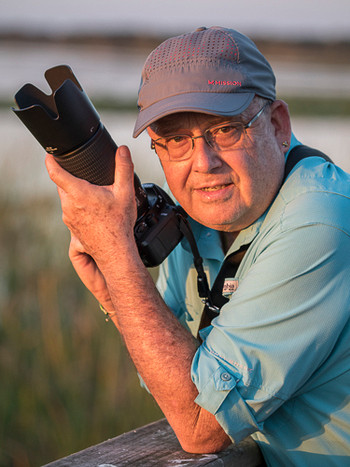
My earliest recollections of photography go back to when I was ten years old and a frequent visitor to the Bronx Zoo in New York City. I begged my parents to let me take some pictures of my favorite animals: an Andean Condor and a Lowland Gorilla. They showed me how to use a twin-lens Rolleiflex with its dark and grainy reversed image viewfinder. Considering the circumstances, my photos weren't too bad. I still have a few of them - and the Rolleiflex.
I pretty much ignored photography through most of my elementary and high school years except for those Instamatic snapshots that I took on our yearly summer expeditions to Florida. Once in college, however, my desire to document the wild places in Florida grew as a result of the fieldwork for my ecology classes at the University of Miami. My father loaned me his Minolta SR-1 SLR along with a few lenses and I was off and shooting.
I settled in Miami after university graduation and began to document the native plants of this region as a means to learn about them. Since then, I been going out into the Everglades, Big Cypress Swamp, or the Florida Keys at least once or twice each month. Through this practice, I have learned to be a keener observer of inner and exterior light, structures and textures, hidden and visible patterns, forms and shapes, and all the while my artist's eye has been developing.
Over time, I developed a desire to broaden my ecological and photographic horizons, so I organized a Galapagos Islands natural history workshop for teachers in the summer of 1984 and spent three weeks traveling and shooting in the Ecuadorian Andes, the Amazon basin, and the Galapagos. It was a nice way to feed two birds with one scone: broaden my photographic world view and get paid. The trip was so well received that for the next twelve summers, I organized a similar teacher workshop; four to Ecuador, three to Kenya, and five to Costa Rica. I served The Honors College at Miami Dade College as Lead Faculty Advisor for six student seminars in global citizenship in Salzburg and Vienna, Austria and used my free time to make photos in these beautiful locations. Family trips around the Caribbean have also afforded me opportunities to photograph people, cultures, and Nature very different from those of my own bioregion.
When I tired of the summer teacher workshops that were enjoyable yet exhausting, I continued to visit and photograph Costa Rica at least once a year because it had captured a big part of my heart. I now consider it my second home and I have published six books of Costa Rican images. Many of those images are in this online gallery. Even with all the travel, the Greater Everglades watershed has continued to hold my roots, be my photographic playroom, and offer me retreat and rejuvenation.
After forty five years as an educator, primarily teaching environmental science and ecology to community college students, I retired in 2019 as Professor Emeritus from Miami Dade College. Since then, I have devoted more time to photographic projects as I continue to explore the intersections between Spirit and Nature. My spouse and I moved to Richmond, Virginia in March 2021 and I've continued to explore my personal point of view of this fascinating world through the camera lens.
While spending time in Nature, I've often had experiences that guided me beyond my own limited senses. Standing on a prairie in the Big Cypress Swamp miles from the nearest road, watching the Fall leaves turn in the mountains of Shenandoah, or sitting quietly in a Costa Rican cloudforest with eyes closed - feeling a deep connection to all beings - animate and inanimate. Being "in the zone" with camera in hand has been some of the most ecstatic times of my life. Through these experiences, I'm beginning to understand the fundamental unity that underlies all things. And as I put my eye to the viewfinder, I continue trying to capture that elusive feeling of oneness with Nature that I have come to cherish so much.
Let the beauty we love be what we do.
Don't go back to sleep.
- Rumi
Shameless plug
I’m a proud member of Nature First: The Alliance for Responsible Nature Photography and I’m dedicated to following the Nature First Principles:- Prioritize the well-being of nature over photography.
- Educate yourself about the places you photograph.
- Reflect on the possible impact of your actions.
- Use discretion if sharing locations.
- Know and follow rules and regulations.
- Always follow Leave No Trace principles and strive to leave places better than you found them.
- Actively promote and educate others about these principles.
Acknowledgements
I'd like to acknowledge my photographic companions Brad Stocker, Haniel Pulido, and Tony Barros who have accompanied me on my outings all over Florida and in Costa Rica. Thanks also to Haniel Pulido of Falcon Shots Photography for his suggestions for the design of this portfolio.
Chris Migliaccio's Books of Photographs
Each title is available in print and pdf versions; many of the photos in these books are in this online gallery.
- Aruba
- Vancouver (Canada)
- Passages: My Journeys in the Land of Mozart (Austria & Germany)
- Blue Skies at First Light (South Florida)
- Ecuador: Andes, Amazon & Galapagos
- Our Kenyan Safaris
- Costa Rican titles